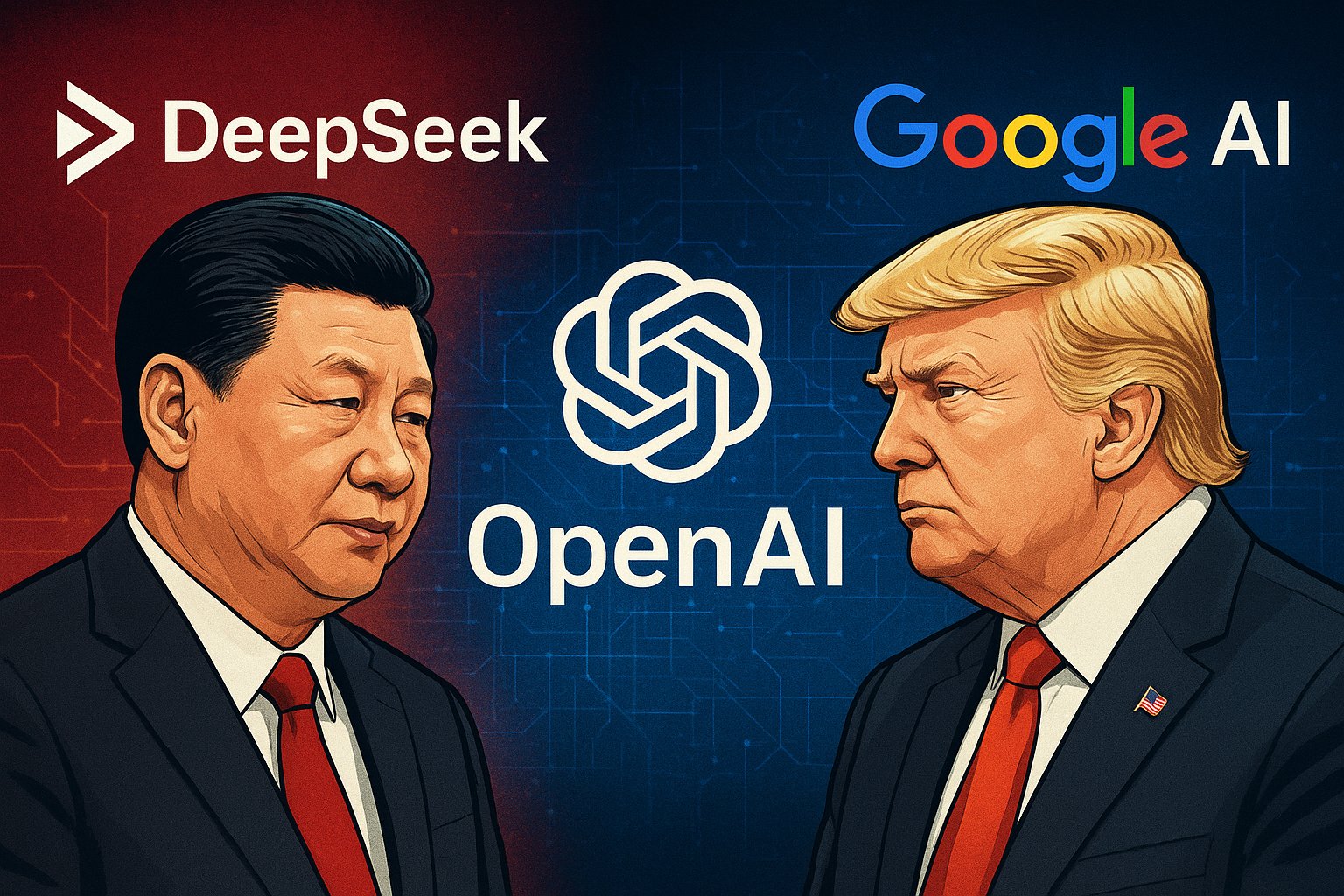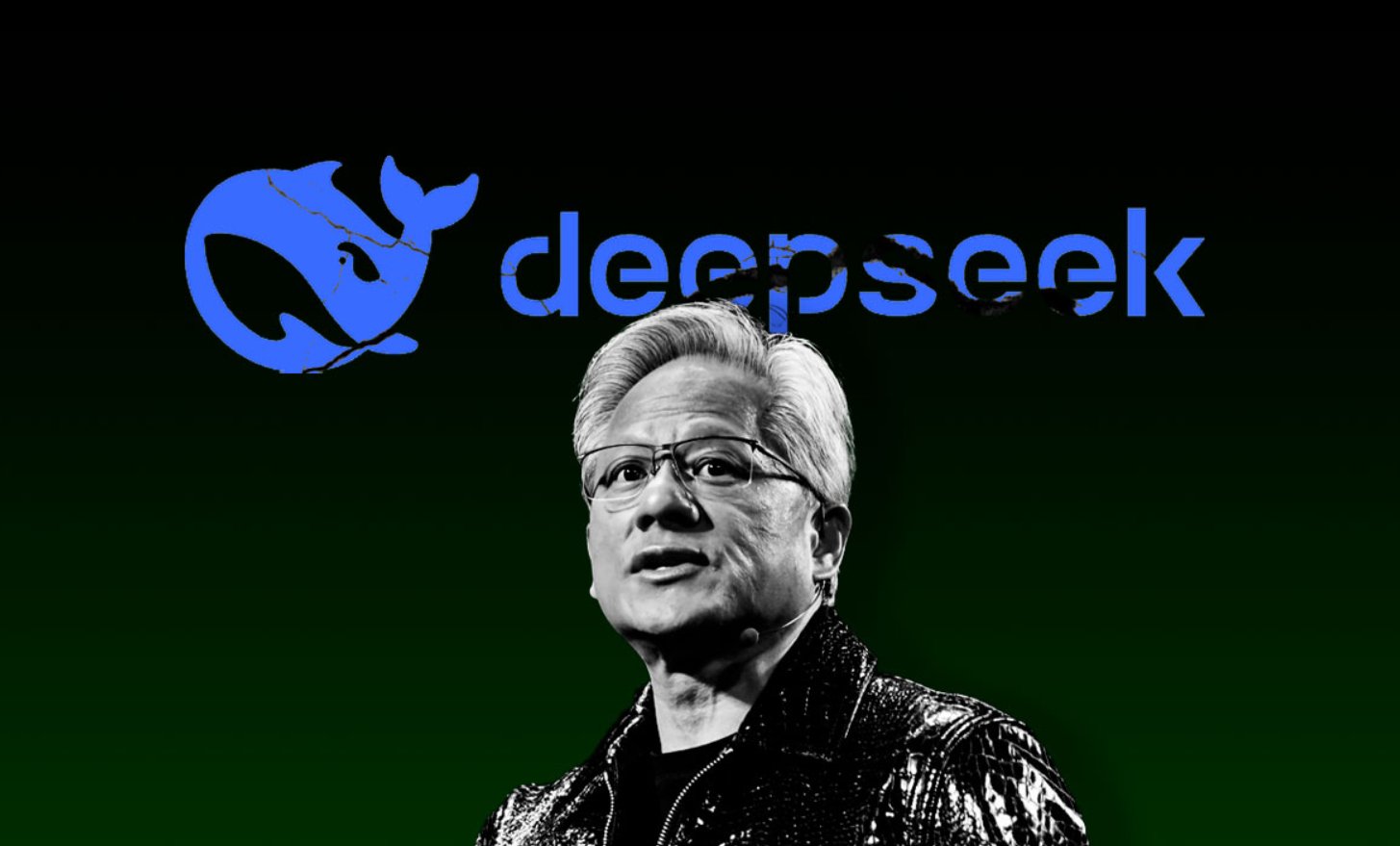China’s announcement of its DeepSeek-R1 AI model shocked both Silicon Valley and Wall Street half a year ago.
The AI app soared to the top of Apple Inc.’s App Store in China as “ChatGPT, OpenAI’s Coding Assistant” and faced off against an English version of ChatGPT, whose development cost only a fraction (5.6 million dollars) of what was spent by US tech giants.
However, the stock market was what really hit me. DeepSeek’s popularity explosion the next day is responsible for what remains to this day: In just one day, Nvidia lost $600 billion in market value, the largest single-day loss in US stock market history.
After that, a bunch of other AI-exposed tech stocks tumbled, and there was panic in the air over America losing its position at the top rung of the ladder to China.

From AI Underdog to “Sputnik Moment”
At the beginning of January 2025, China was widely regarded as lagging behind some of the most advanced players in AI, like OpenAI, Google DeepMind or Anthropic.
That perception began to shift after venture capitalist Marc Andreessen called DeepSeek’s introduction “AI’s Sputnik moment,” evoking the Soviet satellite that triggered a space race between global superpowers.
DeepSeek is one of the first to claim world-class AI performance without massive data centers, thousands of GPUs and voracious electricity consumption that are common in US models.
“What really shattered was this idea that bigger is always better,” said Sid Sheth, CEO of d-Matrix, a startup developing AI chips. The outcome was clear: “DeepSeek demonstrated that clever optimization can go head-to-head with brute-force computing.

Security Fears & US-China AI Rivalry
US businesses and some government agencies rushed to ban the app as downloads skyrocketed. DeepSeek’s privacy policy states that user data is allowed to reside in China, and this has raised fears of deep connections to Beijing intelligence.
A U. S. State Department official told the BBC that they think DeepSeek has “of its own volition and knowingly supported Chinese military and intelligence activities,” a claim DeepSeek has not directly responded to.
Nevertheless, the idea of DeepSeek as a cheap alternative to American AI platforms has started to gain traction among cash-strapped Silicon Valley startups.
But the fact is that many people are violating this rule and running it locally on personal hardware to avoid sending data all the way back to Chinese servers, a workaround that is often dissected in online AI forums.
The Economic Shockwave
DeepSeek had only just provided a stark reminder of what was still an immature AI market in the United States: one where companies such as OpenAI were said to have dropped $5 billion the year before creating bigger, costlier models.
By comparison, DeepSeek claimed to outperform OpenAI’s o1 model on multiple benchmarks while spending less than 0.2% of that amount. So, does this means the trends and future of AI is shifting from US to China?
“DeepSeek exposed China’s AI ecosystem to the wider world,” said Wendy Chang, Mercator Institute for China Studies
In response, the Trump administration unveiled an AI Action Plan to “maintain America’s competitiveness,” with AI being placed in a national security and economic context.
Did DeepSeek Really Change the Industry?
DeepSeek seemed, momentarily, to be tilting the industry in favor of “right-sized” AI models: smaller, faster, less expensive and more readily deployable.
Even OpenAI’s recent release of its first free, open-source models in five years was seen as influenced by China’s DeepSeek’s approach.
But, the momentum may not last.. Just days after releasing its slimmed-down models, OpenAI pulled the tarp off GPT-5 and revealed that it would be funding some of the largest AI data centers ever built, in a return to “the bigger the better.
Nvidia stock hit new all-time highs, and Big Tech players like Meta, Microsoft and Google are investing in high-budget AI infrastructure.

“Those early narratives turned out to be a little bit of a false lead,” said Mill Pond Research’s Christopher Caen. More chips, more data, more power. “This is how we ended up where we are today.” Also, US software developers are worried that if chinese AI replace the programmers.
DeepSeek’s Future: Innovation or Fade-Out?
The company produced another product called DeepSeek-R2, but this model’s commercial launch has been postponed because of a lack of high-end AI chips.
There is growing competition, not only from US tech behemoths, but other Chinese AI startups itching to find their day in the sun as well.
“DeepSeek shook the market, but sustaining that impact is the real challenge,“ said Marina Zhang, Associate Professor at the University of Technology Sydney.
That’s it from my side. If you have any question related to this topic, comment below. Moreover, if you are new to AI, then you may need to know the basic of AI terms.

